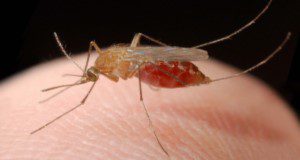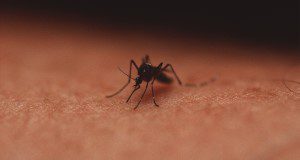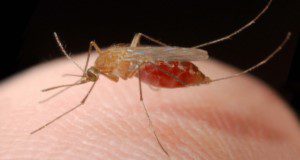The Prevent & Protect publication series focuses on the creation of different material formats to resonate with various audiences and ways to maximize their efficacy in communicating risk to the public about mosquito control. This new 4-page publication of the UF/IFAS Department of Agricultural Education and Communication explains how to engage in effective crisis communication and how to effectively use the Prevent & Protect emergency toolkit in a mosquito-related crisis situation. Written by Ashley Mcleod-Morin, Ricky Telg, Phillip Stokes, Alena Poulin, Shelli Rampold, Angela B. Lindsey, and Sandra Anderson.
https://edis.ifas.ufl.edu/wc363
Tag: Shelli Rampold
Understanding Public Perceptions of Mosquito-Related Information Sources and Adapting Research Findings to the Needs of Industry Professionals
The Prevent & Protect publication series focuses on the creation of different material formats to resonate with various audiences and ways to maximize their efficacy in communicating risk to the public about mosquito control. The overview of the Prevent & Protect project, developed by the UF/IFAS Center for Public Issues Education in Agriculture and Natural Resources (PIE Center), can be found in EDIS publication AEC694/WC357, Public Perceptions of Mosquitoes and Mosquito Control. This new 3-page document describes the importance of understanding and adapting to public perceptions of information sources and how scientists can adapt their research findings based upon the needs of professionals in the field to create usable outreach materials. Written by Shelli Rampold, Ricky Telg, Alena Poulin, Sandra Anderson, Angela B. Lindsey, Ashley McLeod-Morin, and Phillip Stokes, and published by the UF/IFAS Department of Agricultural Education and Communication.
https://edis.ifas.ufl.edu/wc358
Public Perceptions of Mosquitoes and Mosquito Control
The Prevent & Protect publication series focuses on the creation of different material formats to resonate with various audiences and ways to maximize efficacy in communicating about mosquito-related risks and mosquito control topics to the public. This new 3-page publication of the UF/IFAS Department of Agricultural Education and Communication provides a background of public opinion on various aspects of mosquito control covered in the Prevent & Protect campaign. Written by Shelli Rampold, Ricky Telg, Alena Poulin, Sandra Anderson, Angela B. Lindsey, Ashley McLeod-Morin, and Phillip Stokes.
https://edis.ifas.ufl.edu/wc357
Meeting With Elected Officials
This 3-page document is one in a series on communicating with policymakers and elected officials, and discusses strategies for meeting with elected officials. Written by Ricky Telg and Shelli Rampold and published by the UF/IFAS Department of Agricultural Education and Communication, January 2019.
http://edis.ifas.ufl.edu/wc318
Strategies for Engaging and Communicating with Elected Officials
This 5-page document is one in the series Communicating with Elected Officials. It details a strategy for those seeking to engage with elected officials. Written by Ricky W. Telg and Shelli D. Rampold and published by the UF/IFAS Department of Agricultural Education and Communication, December 2018.
http://edis.ifas.ufl.edu/wc324
Communicating to the Ages: Influence of Age on Florida Residents’ Informational Processing Behaviors
This 5-page document explores the results of a study in which Florida residents processed video messages about fertilizer best practices, with a focus on how their information-processing behaviors differed by age. Written by Amanda D. Ali, Laura A. Sanagorski Warner, Ashley N. McCleod, Shelli Rampold, and Alexa J. Lamm and published by the UF/IFAS Department of Agricultural Education and Communication, December 2018.
http://edis.ifas.ufl.edu/wc323




